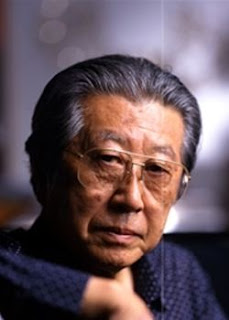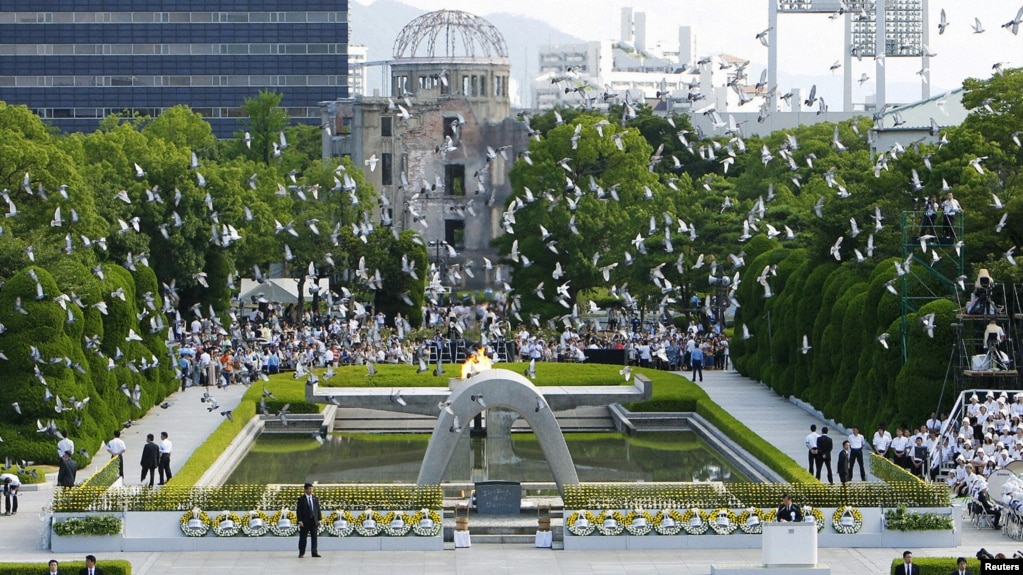Ikura Dan's Symphony no 6 "Hiroshima" (1985). The photo above isn't Hiroshima, or Nagasaki, but a still from the movie The Last War (世界大戦争) (Toho, 1961) about an apocalypse in a Cold War future. Frighteningly prescient now when trolls play power games with nuclear weapons for toys. Ikura Dan (1924-2001) was an aristocrat from a wealthy samurai family. His forebears were part of the Zaibatsu, who created the modern Japanese economy and banking system. His grandfather was Baron Takuma Dan, boss of the Mitsui Corporation, and Prime Minister of Japan. Born into privilege, Ikuma Dan had all the advantages that his position offered him. He had a good education, both in Japanese and international culture. Yet he lived in times of unprecedented social change. When he was six, his grandfather was assassinated by right-wing extremists. He lived through the wars against China, though he was not a combatant. Like many Japanese intellectuals he had an affinity for Chinese culture. He died in Suzhou.
Shrill whirring marks the start of Dan's Hiroshima Symphony. Suddenly a blast, then silence and the eerie cry of a lone woodwind instrument. Swirling, turbulent figures ascend upwards. Tense, angular figures. Fierce ostinato, interspersed with themes where staccato notes fly in flurries. Long, sweeping lines in the strings, reaching out as if searching, yet also smothering the other layers in the music. Yet other textures emerge. The searching lines clear to reveal the high-pitched solo woodwind, calling into space. It's intriguing. A nohkan is a flute with a high tessitura that can range over two octaves and carry across a large performing space. Dominant chords for strings, brass and winds in more or less unison return, but the lone woodwind struggles against them. Trumpets scream strident lines, marked by the thud of timpani. The strings soar ever upwards gradually breaking from the relentless ostinato. A harp sounds, introducing a new motif, also soaring but more subtle. Delicate hints of lyrical melody peak out from the gloom, and the woodwind reappears, now more confident, singing its strange melody. It's much more interesting than the orchestral lines with their very western timbre, which dominates for many measures. Significantly, the nohkan was invented in the fifteenth century, long before the modern concert orchestra. The nohkan will not be beaten. It screams, holding legato at a very high pitch, Very dramatic and highly original. Not concertante in the least but a battle of wits between large forces and a wayward, elusive solo instrument played with such intensity that it holds the orchestra at bay. A descent into ominous semi-silence.
Zingy zig-zag figures fly fiercely as the second movement, an Allegro ritmico, begins. The pace is fleet, dizzying lines giving way to oddly dance-like snippets, broken by violent staccato. Pastiche "Japonisme" stepping rhythms and crashing cymbals alternate with trumpets and heavier plodding figures, possibly meant to sound borderline vulgar. Tempi grow faster, almost to whirlwind. Suddenly, the nohkan breaks through, the music now properly Japanese. Imagine a bird singing in a wilderness, or a stream trickling in the forest around a temple. Frenzied figures return, hurtling on in new directions. The orchestra swells up again, highlighted with drums, trumpets, bells and crashing percussion. Something is changing, somehow.
Frankly, I don't know why Penderecki's Threnody gets so much publicity. It's fame lies in its title, but that title is bogus and exploitative. It wasn't written "for the victims of Hiroshima", but was dreamed up for a premiere As music, it's also not nearly as well written as Ohki and Dan's Hiroshima symphonies, which are sincere. (Read more sbout Ohki HERE and HERE.) Ikuma Dan';s Hiroshima is the real thing, written by a composer who knew from personal experience what Hiroshima meant and how it connects to Japanese history and to world humanity. So let's give Ikuma Dan the honour he deserves.
If you like this, please read about Toru Takemitsu's Requiem HERE and about Japanese art movies about war, like The Burmese Harp HERE and Kobayashi's three part saga The Human Condition HERE


No comments:
Post a Comment